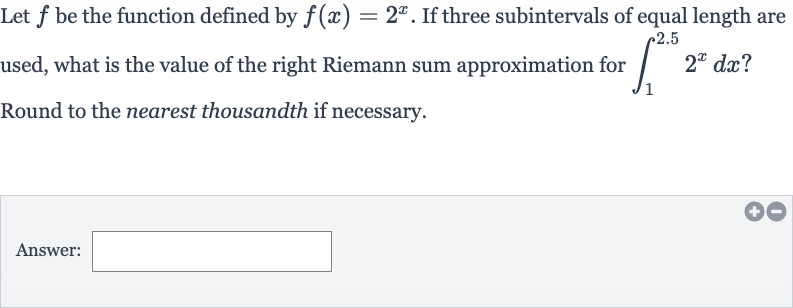Full solution
Q. Let be the function defined by . If three subintervals of equal length are used, what is the value of the right Riemann sum approximation for ? Round to the nearest thousandth if necessary.Answer:
- Determine Subinterval Length: We are given the function and we need to approximate the integral from to using a right Riemann sum with three subintervals of equal length. First, we need to determine the length of each subinterval.The total interval length is . Since we are using three subintervals, the length of each subinterval is .
- Find Right Endpoints: Next, we need to find the right endpoints of each subinterval. Since we start at and each subinterval is units long, the right endpoints will be at , , and .
- Evaluate Function at Endpoints: Now we evaluate the function at each of the right endpoints. This gives us the heights of the rectangles for the Riemann sum.
- Calculate Function Values: We calculate the values of the function at these points:
- Calculate Riemann Sum: The right Riemann sum is the sum of the areas of the rectangles. Each rectangle has a base of (the subinterval length) and a height given by the function value at the right endpoint. So the Riemann sum is:Riemann sum Riemann sum
- Perform Calculations: Performing the calculations gives us:Riemann sum Riemann sum Riemann sum
- Round to Nearest Thousandth: Rounding to the nearest thousandth, we get:

